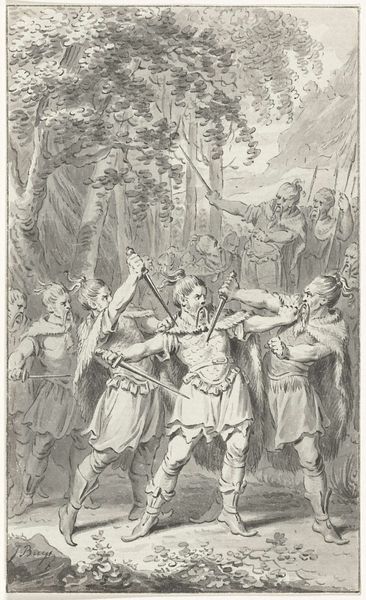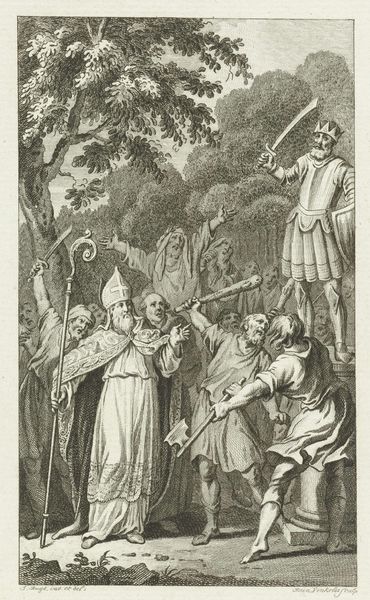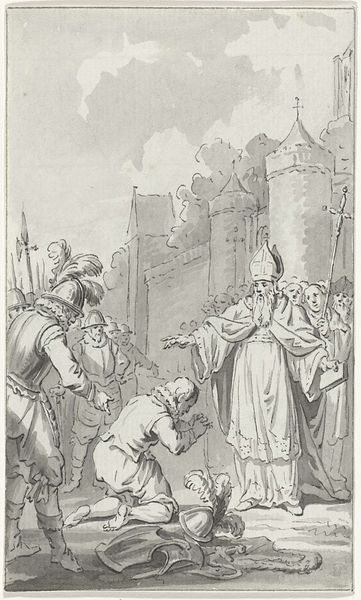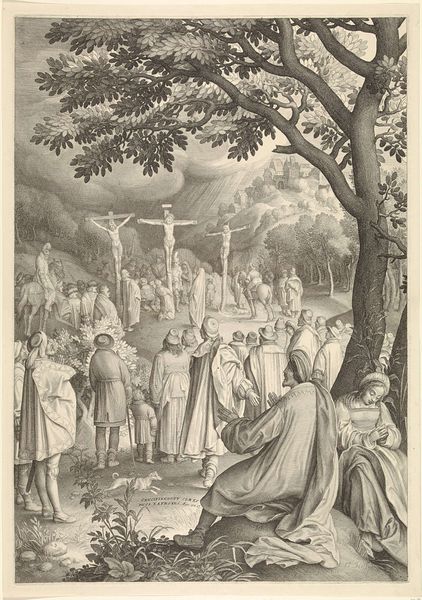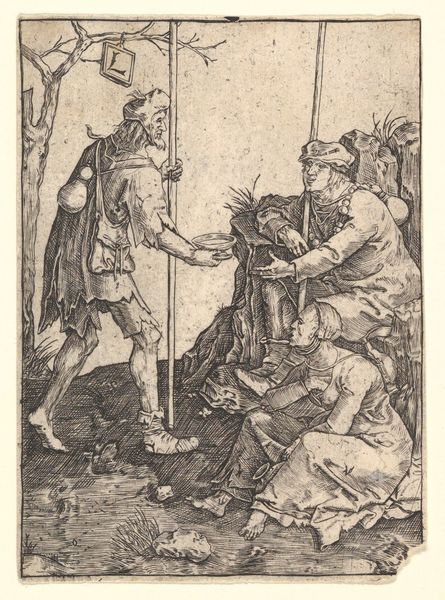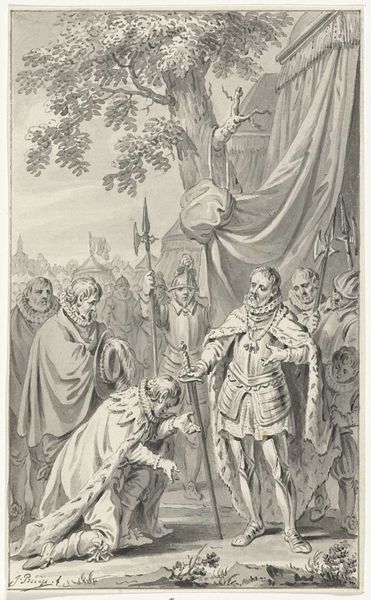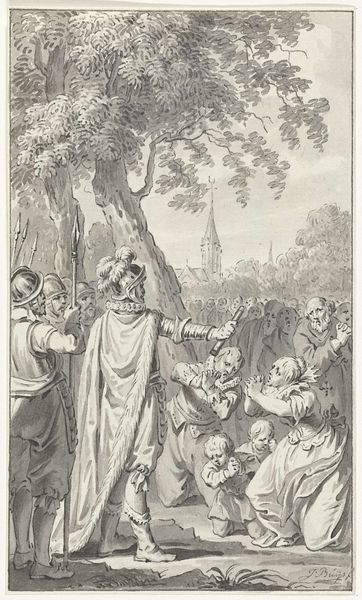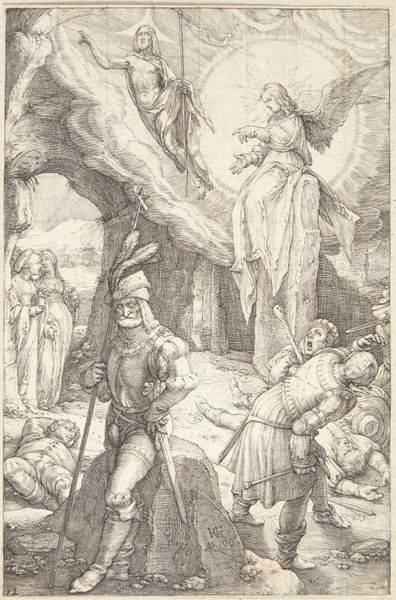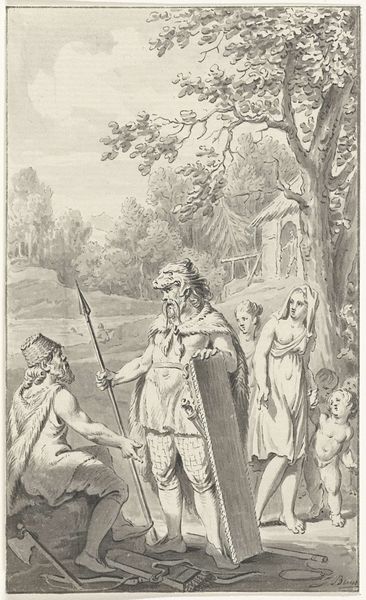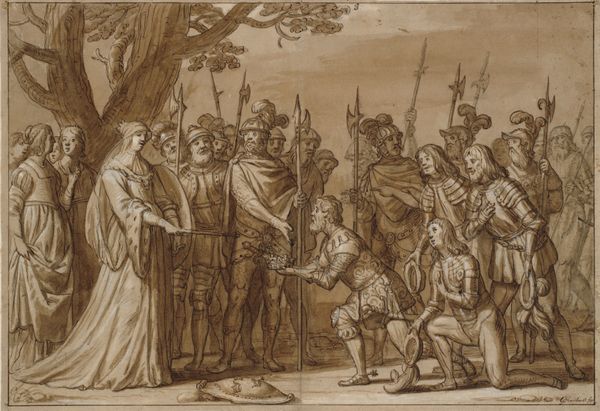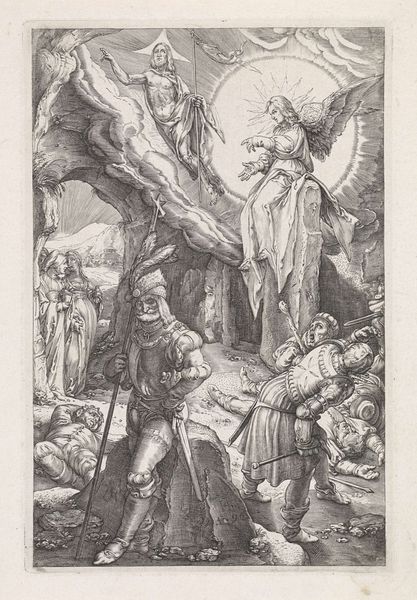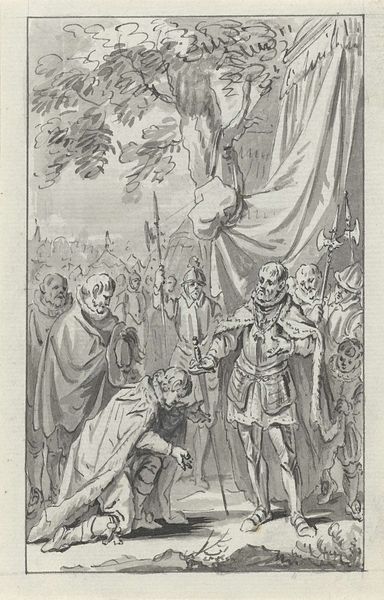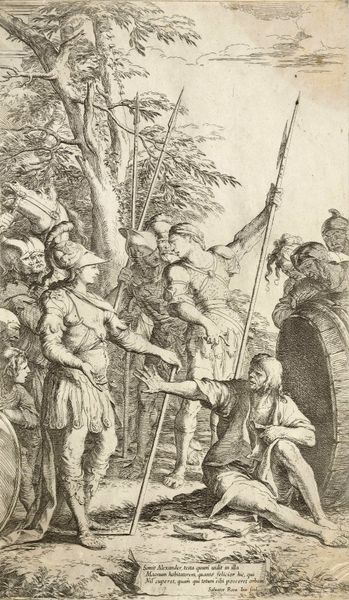
Willibrord laat het afgodsbeeld van Wodan op West-Kapelle verbrijzelen in 695 1783 - 1799
0:00
0:00
drawing, ink, pen
#
drawing
#
medieval
#
narrative-art
#
neoclassicism
#
pen illustration
#
pencil sketch
#
figuration
#
ink
#
pen-ink sketch
#
pen
#
history-painting
Dimensions: height 150 mm, width 90 mm
Copyright: Rijks Museum: Open Domain
Curator: Here we have Jacobus Buys's pen and ink drawing, "Willibrord laat het afgodsbeeld van Wodan op West-Kapelle verbrijzelen in 695," created between 1783 and 1799. It depicts Willibrord, an Anglo-Saxon missionary, ordering the destruction of a Wodan statue. Editor: It’s striking how Buys uses such precise lines to create a sense of drama and disorder, like a freeze-frame of fervent iconoclasm. There's almost a baroque energy trapped in the neoclassical form. Curator: Precisely. The artwork serves as a historical record, but more importantly it shows us the power dynamics at play during religious conversion. Willibrord’s actions are imbued with themes of cultural erasure and the imposition of a new belief system onto indigenous populations. Note how the figure of Willibrord is strategically placed to stand out among the chaos: dressed in distinct clothing, contrasted by his calm pose and centrally staged in the composition to visually cue his power and dominance to the viewer. Editor: The statue’s destruction becomes almost allegorical through the figures' expression and bodily gesture. Those pulling it down have the appearance of uncontrolled rage, the calm missionary, as you point out, serving as a sort of fulcrum around which that violence seems to circulate. I can see neoclassicism coming through here: even within that frenzy of action there's an underlying order created by the use of tonal gradations, classical figuration and the overall structure of the composition, for example. Curator: Absolutely, and it is important to contextualize it within the rise of nationalism in the late 18th century. Such depictions reinforced ideas about a singular, unified Dutch identity and served as a historical narrative with the suppression of other religious beliefs. The narrative carries resonances still for contemporary discussions around cultural heritage. Editor: I agree. This artwork, though seemingly straightforward in its historical depiction, encourages a lot of contemplation on power, identity, and cultural transitions. The pen and ink style combined with the composition make it incredibly effective. Curator: It invites reflection on the complex layers of history, colonialism, and religious conversion in the Netherlands. Editor: It really highlights how aesthetic choices reinforce ideology. A visually powerful piece that gives much food for thought.
Comments
No comments
Be the first to comment and join the conversation on the ultimate creative platform.
